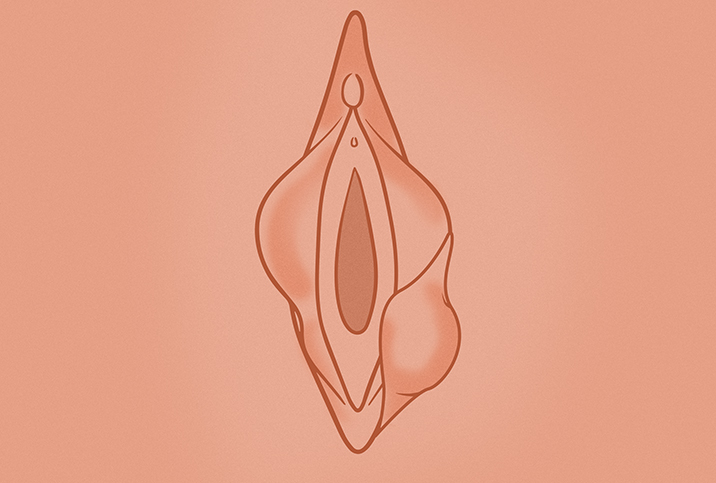What Are Bartholin's Glands and Can You Live Without Them?

The Bartholin's glands are two pea-sized glands located on each side of the posterior region of the vaginal opening. They are connected to ducts situated between the labia minora and the hymenal edge.
These glands drain mucus from the ducts to lubricate the vulva and the vagina. Bartholin's glands are usually not palpable or visible to the naked eye unless they become infected.
About 2 percent to 3 percent of women experience health issues related to their Bartholin's glands. This low incidence contributes to a lack of ready information, which in turn means a lot of women don't know they have these glands until they start experiencing problems.
Let's look at the causes and treatment options for Bartholin's gland cysts, a common infection, and the less common Bartholin's gland abscess, including when a physician might recommend removing the Bartholin's glands.
Bartholin's gland cyst
A Bartholin's gland cyst is a common condition. A cyst forms when the duct that supplies the gland becomes obstructed, leading to a buildup of mucus. These cysts can occur as early as puberty, but most cases are found in sexually active women of childbearing age.
This fluid buildup in the duct can be caused by trauma to the vagina, childbirth, sexually transmitted infections and diseases (STIs/STDs), or bacteria. It may also occur without any identifiable causes, according to Michael D. Godlonton, M.D., a partner physician at the practice of Mutesasira, Lloyd and Godlonton and in Grahamstown, South Africa.
In its initial stages, the cyst is between 2 and 4 centimeters in diameter, and you may not even notice it. At this size, it may resolve on its own. However, once it starts growing, you may start to experience symptoms, such as vague pelvic pain, irritation when urinating, discomfort when walking or sitting, and pain during sex.
A cyst can double in size in just a matter of days , especially when you are sexually active. Once it gets to this stage, treatment is needed.
Your physician may recommend the following treatments:
- Sitz baths. Fill a tub with a few inches of salted, warm water (enough to immerse the cyst) and soak yourself in it for about 15 minutes. Three or four sitz baths a day for four days should help a small cyst rupture and heal on its own.
- Surgical drainage. If sitz baths do not work, a minor surgical procedure may be needed. This procedure is usually performed under local anesthesia on an outpatient basis. Your physician makes a small cut in the cyst, drains it and then places a small catheter in the incision. The catheter stays in place no longer than six weeks to keep the incision open and allow fluid to drain.
Bartholin's gland abscess
When a Bartholin's cyst becomes infected, it leads to a Bartholin's abscess, which presents the same symptoms as a cyst. The difference is that the abscess is filled with pus and is significantly more painful, extremely tender, warm to the touch and red in appearance.
When a cyst becomes an abscess, your physician will most likely recommend the following treatments:
- Antibiotics. Prescribed antibiotics can fight off the infection.
- Silver nitrate gland ablation. A solidified stick of silver nitrate is inserted into the space left after the abscess has been surgically drained. The silver nitrate causes the abscess cavity to form a small, solid mass. The remains of the silver nitrate either fall out or can be removed after two to three days.
- Marsupialization. This procedure can help prevent a Bartholin's cyst from recurring. Your physician places stitches on each side of a drainage incision to create a permanent opening about 6 millimeters long. An inserted catheter may be placed to promote drainage of the duct.
Bartholin's gland removal
On rare occasions, the permanent drainage site opened during marsupialization may heal and close, resulting in a recurrence of a Bartholin's cyst or abscess. This is a common occurrence, and although there are ways to reduce the risk, including practicing safer sex and implementing good hygiene habits, a permanent option is the removal of the Bartholin's gland.
Physicians do not consider this option lightly due to its permanence. This procedure is usually performed under general anesthesia and requires a two- or three-day hospital stay after surgery. The surgery's risks include infection, bleeding, and pain during sexual intercourse.
The removal of one gland does not affect sexual performance, because the other functioning gland compensates for the missing one. However, some women may find it helpful to use artificial lubrication during sex.


















